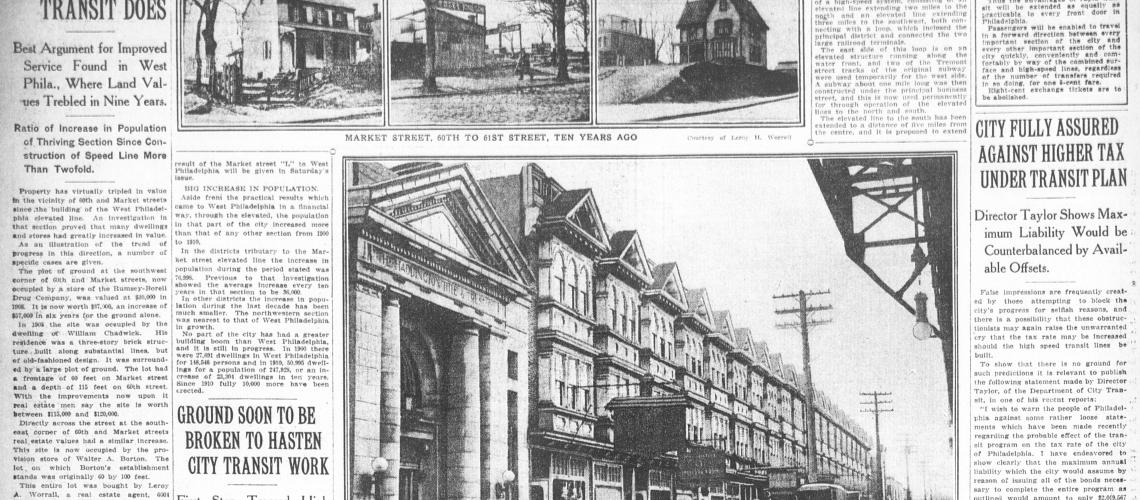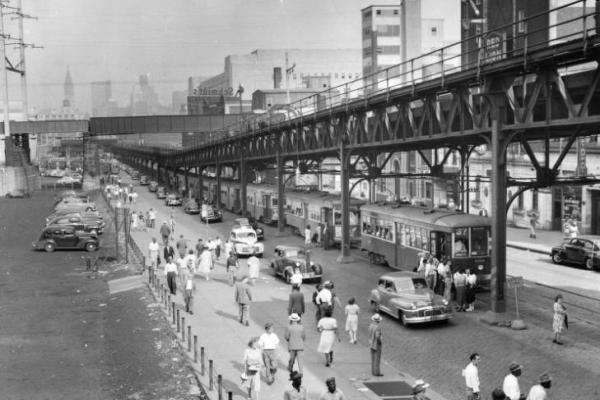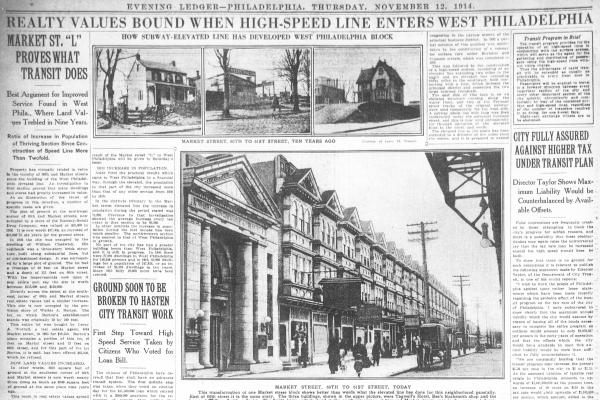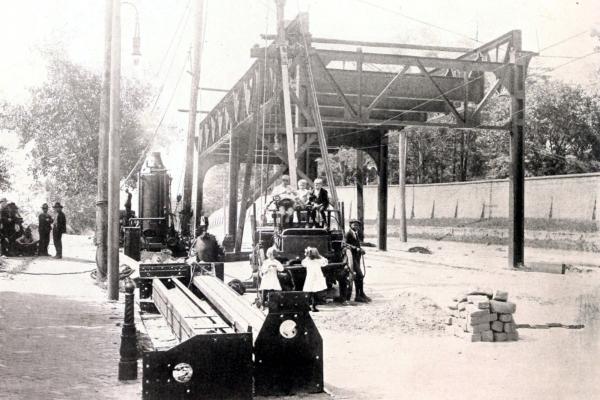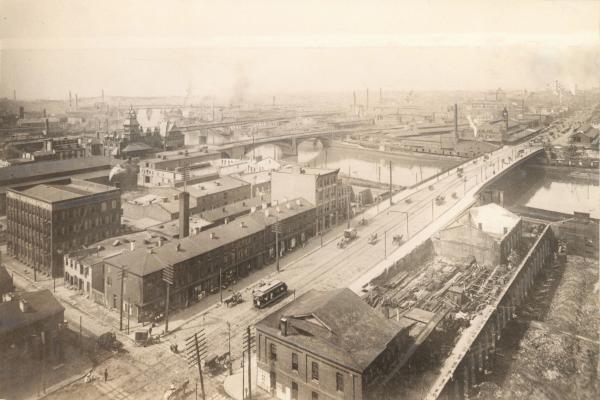Social Impacts of the Market Street Elevated, 1900–1930
From before its opening in 1907, the Market Street Elevated spurred tremendous construction and population growth in West Philadelphia.
Opened in 1907, with two miles of tracks running west of the Schuylkill River, the Market Street Elevated spurred tremendous population growth and booming construction north of Market Street in West Philadelphia. The El was also the catalyst for demographic shifts marked by the arrival of Italian, Jewish, and African American communities from other parts of the city.
The Market Street Elevated spurred tremendous population growth across a three-mile swath of West Philadelphia neighborhoods north of Market Street. “The Market Street subway elevated line lured tens of thousands of new residents to northern West Philadelphia,” writes the historian Margaret Marsh. “The promise of a 15-minute ride from the western edge of the city into the center of town caused commuters to make West Philadelphia the fastest-growing section of the city during the first decade of the twentieth century.” As Marsh also notes, the El had little impact on the eastern part of West Philadelphia, which was already a “business and residential area” at the turn of the twentieth century.[1]
As the El rose along Market Street, developers rode the crest of a tremendous construction boom that continued to the mid-1910s: “More than 5,000 new structures were erected in Southern Haddington between 1905 and 1915, more than 2,600 in western Mill Creek, and 1,000 in Morris Park, the communities closest to the El. Northern Haddington and lower Overbrook, which were somewhat farther from the El but accessible to it by trolley, together acquired 3,000 new residential structures. By 1910 northern West Philadelphia’s population had grown to 89,024, while the proportion of Philadelphians who lived there had increased to 5.7 percent, up from 3.4 percent in 1900.” By 1912, the area’s population was nearly 100,000, with Haddington and Mill Creek packed to the gills with people.[2]
According to Marsh, the El had a pronounced effect on the class structure of Overbrook Farms, which previously “had been able to maintain itself as a closed upper-class community in part because of its remote physical location. When the El was built, the country estate which had served as a buffer between it and the rest of northern West Philadelphia was sold to developers. The houses later built on that estate were row and semidetached styles, priced for upper middle and middle-income buyers. The long-term effect was to lessen the attraction of Overbrook Farms to wealthy Philadelphians.”[3]
Demographic shifts in response to urban growth and prospects of greater economic opportunity spurred by the El occurred in northern West Philadelphia between 1910 and 1930. Italians left South Philadelphia for Morris Park and Hestonville, and to a lesser extent they settled in Haddington. Jews migrated from North Philadelphia’s Spring Garden section to Strawberry Mansion, and from there to Wynnefield. African Americans grew their share of the area’s population from 2.1 percent in 1910 to 6.1 percent in 1920, and to 19 percent in 1930, compared to 11.4 percent for the city. Each of these groups congregated in separate enclaves. Ethnic segregation was dominant in northern West Philadelphia by 1920. By 1930, however, racial segregation was dominant, as Whites migrated out of northern West Philadelphia to the city’s outlying suburbs in stages that were commensurate with the African American migration.[4]
